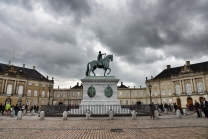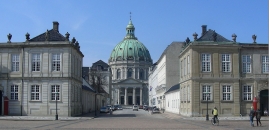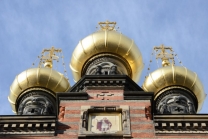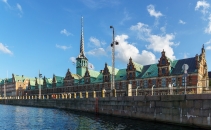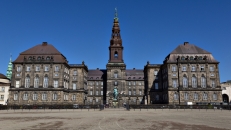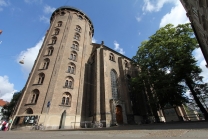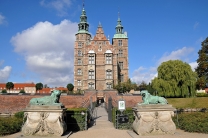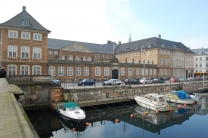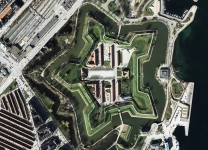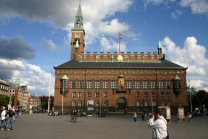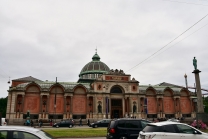
Nyhavn
KML file (edit • help) Template:Attached KML/NyhavnKML is from WikidataNyhavn (Danish pronunciation: [ˈnyhaʊ̯ˀn]; New Harbour) is a 17th-century waterfront, canal and entertainment district in Copenhagen, Denmark. Stretching from Kongens Nytorv to the harbour front just south of the Royal Playhouse, it is lined by brightly coloured 17th and early 18th century townhouses and bars, cafes and restaurants. The canal harbours many historical wooden ships.
History
Nyhavn was constructed by King Christian V from 1670 to 1673, dug by Swedish prisoners of war from the Dano-Swedish War 1658–1660. It is a gateway from the sea to the old inner city at Kongens Nytorv (King's Square), where ships handled cargo and fishermens' catch. It was notorious for beer, sailors, and prostitution. Danish author Hans Christian Andersen lived at Nyhavn for some 18 years.
The first bridge across Nyhavn opened on 6 February 1875. It was a temporary wooden footbridge. It was replaced by the current bridge in 1912.
The canalAs ocean-going ships grew larger, Nyhavn was taken over by internal Danish small vessel freight traffic. After World War II land transport took over this role and small vessel traffic disappeared from the Port of Copenhagen, leaving Nyhavn largely deserted of ships.
In the mid-1960s, the Nyhavn Society (Danish: Nyhavnsforeningen) was founded with the aim of revitalising the area. In 1977, Nyhavn was inaugurated as a veteran ship and museum harbour by Copenhagen’s Lord Mayor Egon Weidekamp. In 1980 Nyhavn quay was pedestrianised; it had been used as a parking area in the previous years which had coincided with a dwindling of harbour activities. Since then it has become a popular spot for tourists and locals alike, serving the function of a square according to architects Jan Gehl and Lars Gemzøe.
Buildings
The northern side of Nyhavn is lined by brightly coloured townhouses built with wood, bricks, and plaster. The oldest house, at No. 9, dates from 1681.
Between 1845 and 1864, Hans Christian Andersen lived at No. 67, where a memorial plaque now stands. From 1871-1875...










